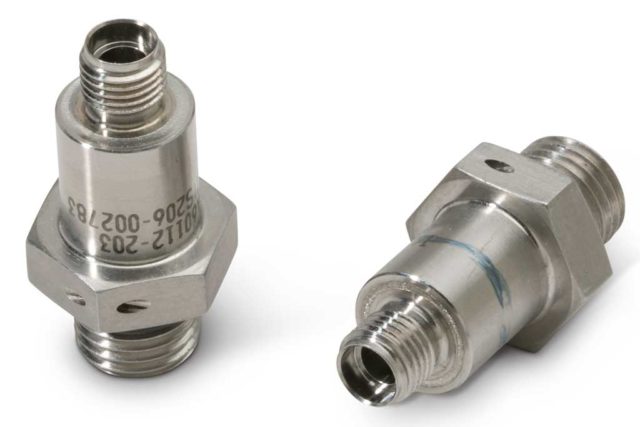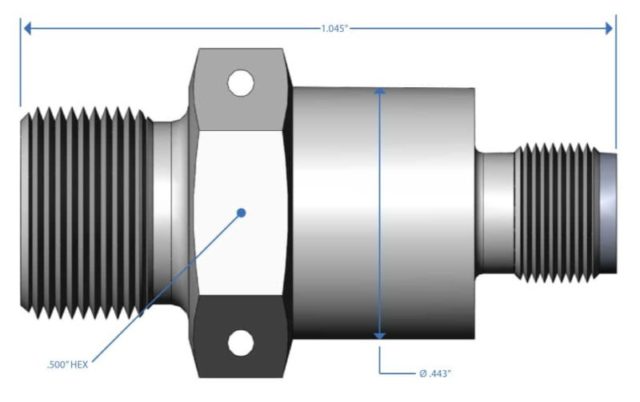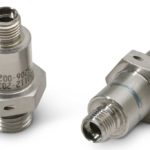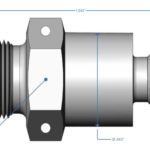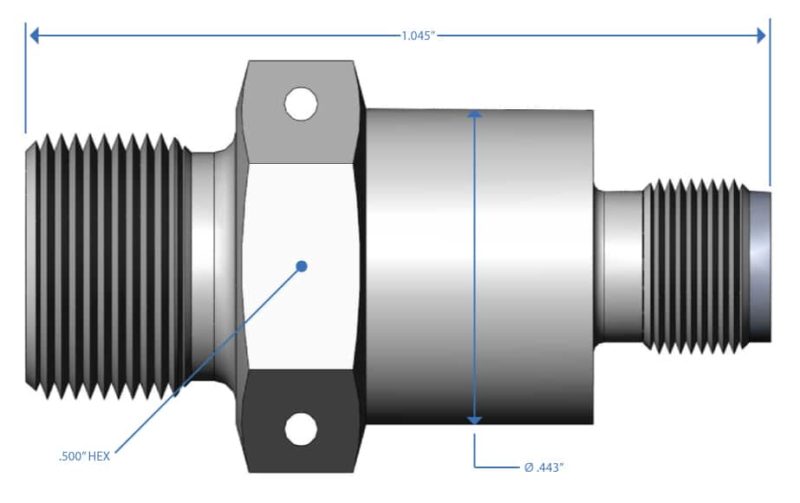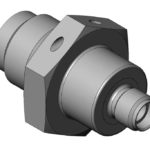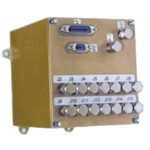Laser Initiator
Product Description
Laser initiators perform the same roles as conventional initiators although they use an alternate activation method – infrared laser light. The initiator output can be catered to either favor sustained pressure for performing mechanical work, or to emphasize hot particles for igniting adjacent energetics. Laser initiated devices offer unique characteristics over electrically ignited devices. They are ESD, RF and EMI/EMP immune which can be advantageous in certain design applications. They also generally present a system weight reduction for cabling because the fiber optic lines weigh less than typical copper lines and energetic transfer lines. We have qualified designs which utilize 100, 200 and 400 micron fiber optic cable assemblies. Any of the current designs can be adapted to other specified fiber optic systems.
Reliability and safety have been demonstrated on these designs as attested by the approval of range safety and man rated system uses.
Key Features
What Can A Laser Initiator Do?
Laser initiators can be used in applications requiring pressure, hot particles, or both to activate further events and systems. The output pressure is useful for driving pistons that perform duties such as pressure vessel nipple removal, puncturing burst disks, activating separation bolts, driving pins forward or channeling the gas to a piston’s far side to retract the shaft (“pin puller” application). For variants emphasizing hot particles, the output may be used to ignite further energetics such as propellants, boosters, time delays, etc.
Applications
PacSci EMC laser detonators are qualified and used in space launch vehicle applications, satellite release systems, and flare activation to name a few.
Specifications
- All-Fire
Within 20 milliseconds @ 3.5 amp (when electrically initiated)
Within 10 milliseconds from ETL input stimulus - No-Fire
>5 Minutes @ 1amp/1watt (when electrically initiated) - Operating Temperature
-90 °F to +220 °F - Piston Travel Distance
.15 to 2.50 inches typical - Side Loads
100 – 1,700 lbs. force typical - Applicable Specifications
Qualified to MIL-DTL-23659
(applies to electrical initiated Piston Actuator types)
MIL-HDBK-83578 Criteria for Explosive Systems used on Space Vehicles
(design margin validation)
Compliant with MIL-STD-1901A
(apples to energy transfer line initiated Piston Actuator designs)
MIL-STD-1576 Electro-Explosive Subsystem Safety Requirements and Test Methods for Space Systems
MIL-STD-1540 Test Requirements for Launch, Upper Stage and Space Vehicles
MIL-STD-202 Test Methods for Electron and Electrical Component Parts
MIL-STD-810 Environmental Engineering Considerations and Laboratory Tests
